WAR PAST
May 31, 2024
By Amos Chapple
During the Crimean War of 1853-56, a London printing house compiled one artist's paintings of Crimean towns and landscapes to satisfy British curiosity about the peninsula. Nearly 200 years later, many of the sites remain in the headlines amid the latest conflict over the territory.

1This painting of the beach at Eupatoria, western Crimea, is one of 52 illustrations of the peninsula made by Swiss-Italian artist Carlo Bossoli (1815-84).

2The ruins of an unidentified church in Crimea
Bossoli spent most of his youth in Odesa in what was then the Russian Empire. From 1840 until 1842, he traveled throughout Crimea to capture its culture and landscape before cameras were widely available.
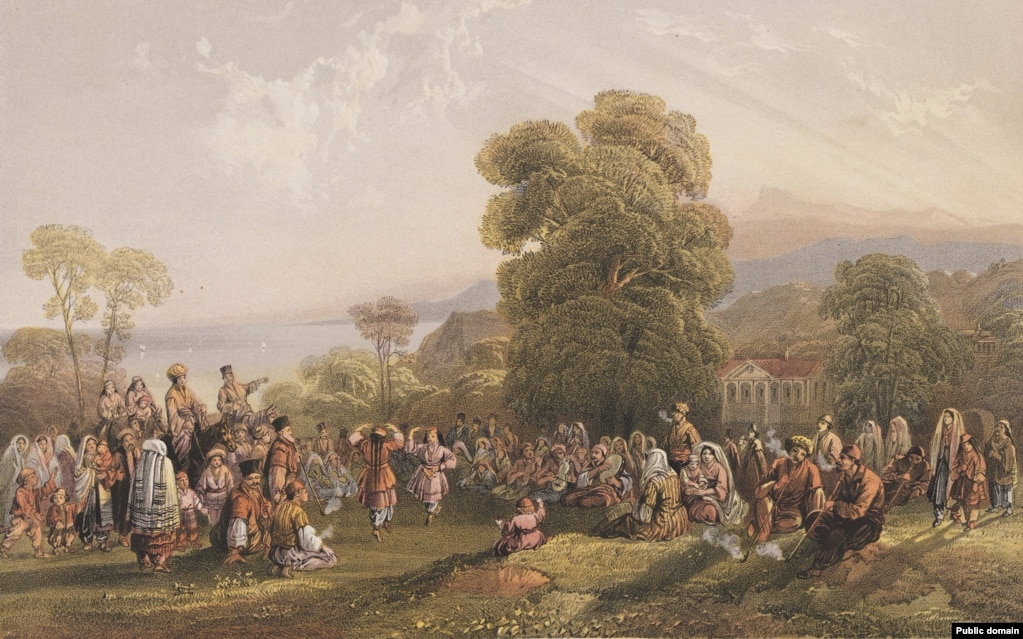
3Crimean Tatars dancing in Massandra, southern Crimea
In 1853, war broke out on the Crimean Peninsula between Russia and an alliance of the Ottoman Empire, Britain, France, and Sardinia, sparking intense public interest in the little-known region.
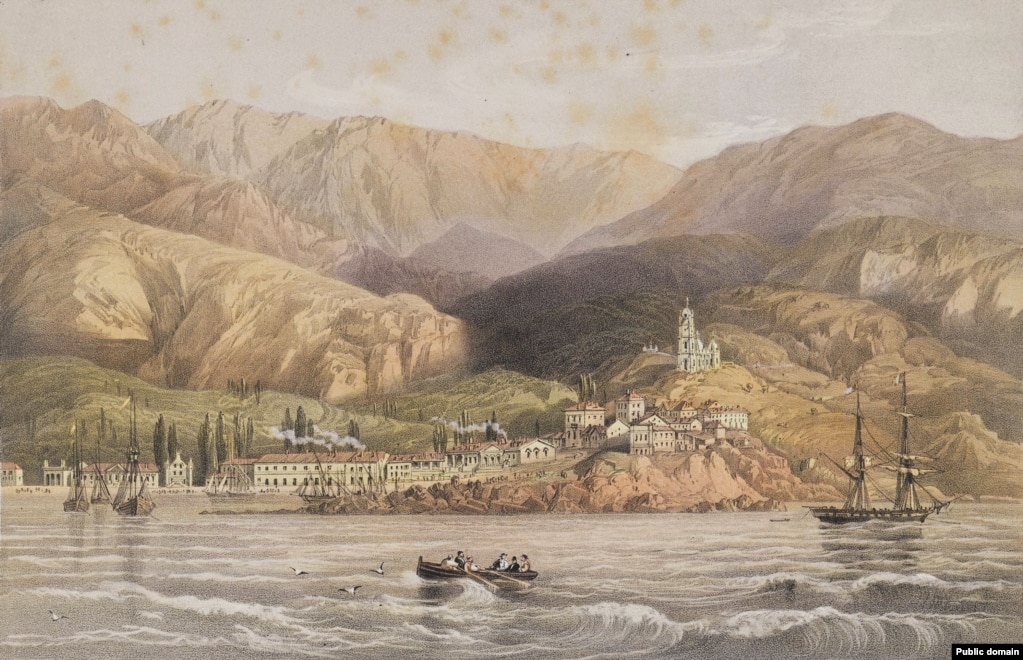
4A view of the southern Crimean town of Yalta
With the war ongoing, a London publishing house approached the well-established Bossoli with an offer to reproduce his early Crimea paintings into a book with explanatory captions.
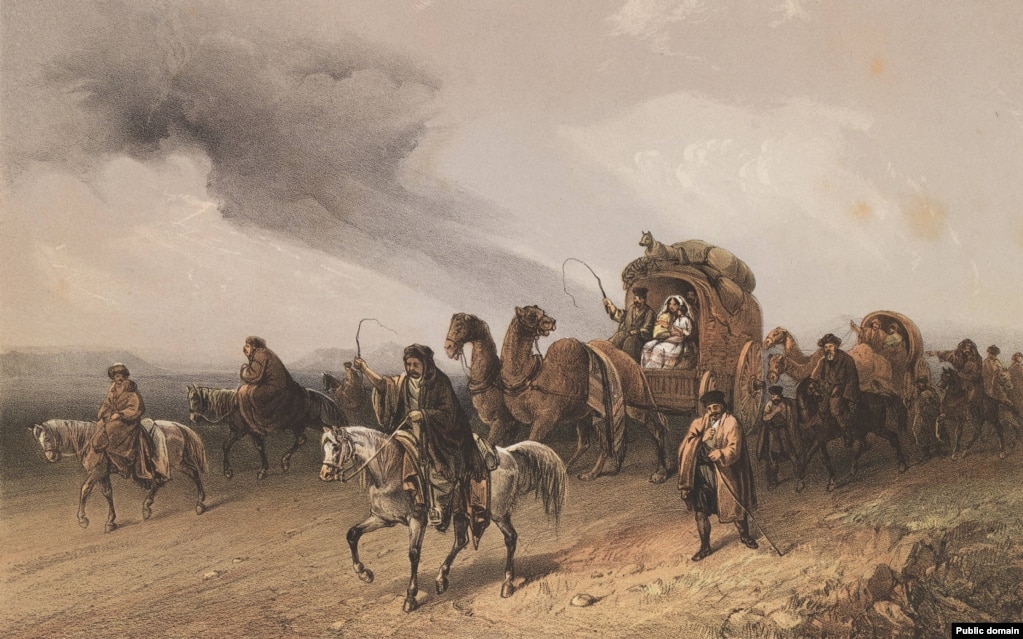
5A caravan of Tatars traveling across the plain of an unspecified region of Crimea
The book, titled Beautiful Scenery And Chief Places Of Interest Throughout The Crimea, was published in 1856. The same year, Bossoli's Crimea paintings were exhibited to a curious public in London.
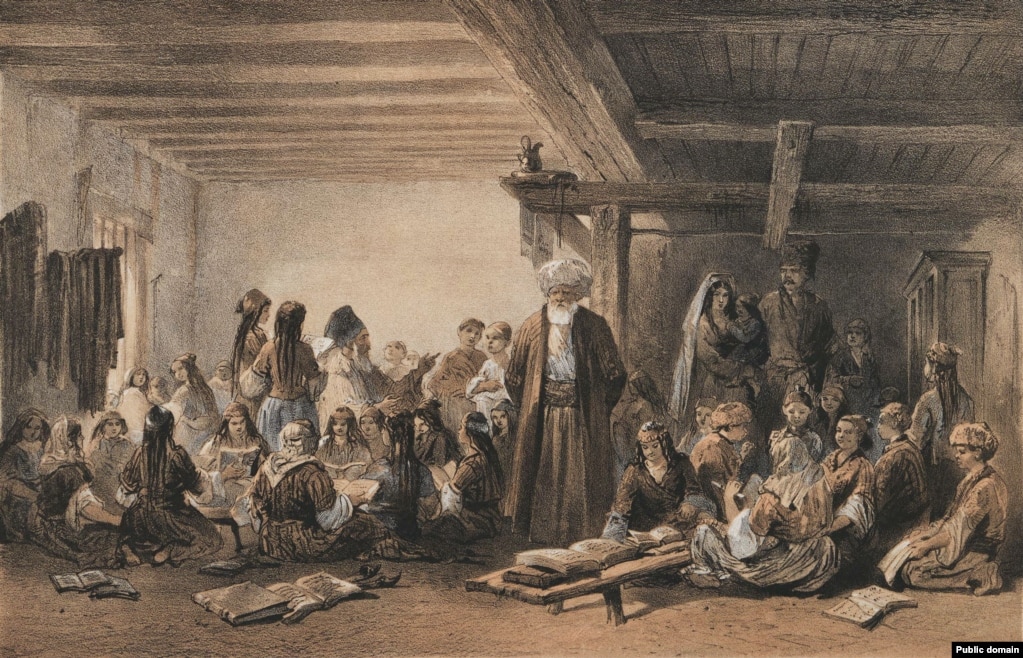
6A Crimean Tatar school depicted at an unspecified location in Crimea
From around 500 copies of the book that were published, one is today held by the DeGolyer Library of the Southern Methodist University in Texas. The images inside are striking for the largely lost world they capture, as well as the continued geopolitical importance of many of the landmarks Bossoli painted.
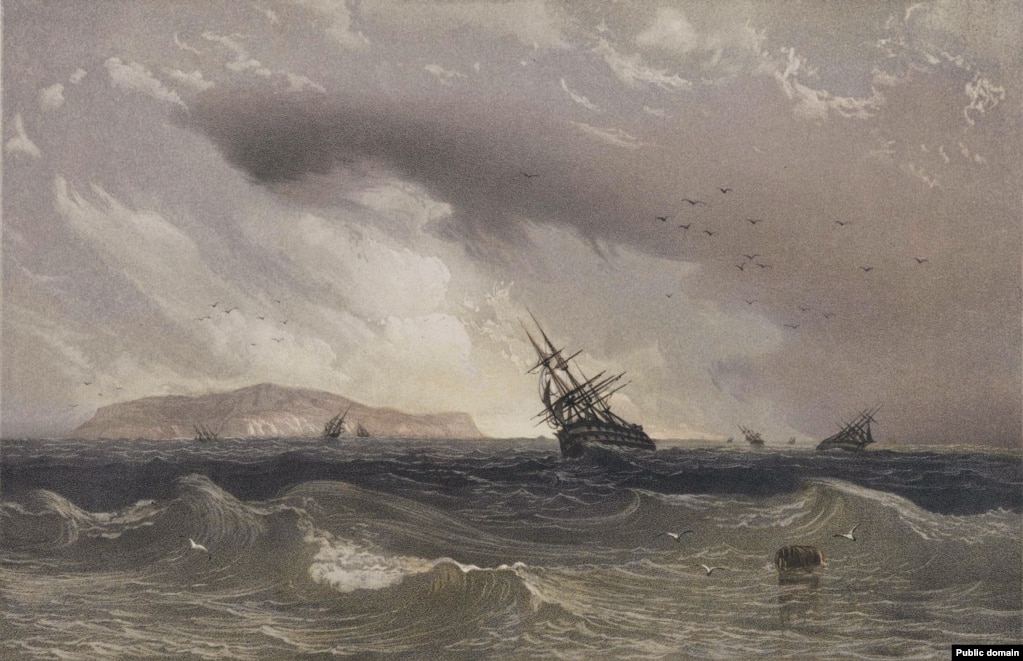
7Snake Island depicted on a stormy day
The island became famous as the position of Ukrainian troops who defied a Russian warship at the opening of the 2022 Russian invasion of Ukraine, but its turbulent history stretches back to early Greek civilization.
A temple to Achilles once stood on the island, which was later fought over by the Ottoman and Russian empires, then controlled by Romania. The Soviet Navy captured the island in World War II, then Ukraine inherited it following the collapse of the Soviet Union.
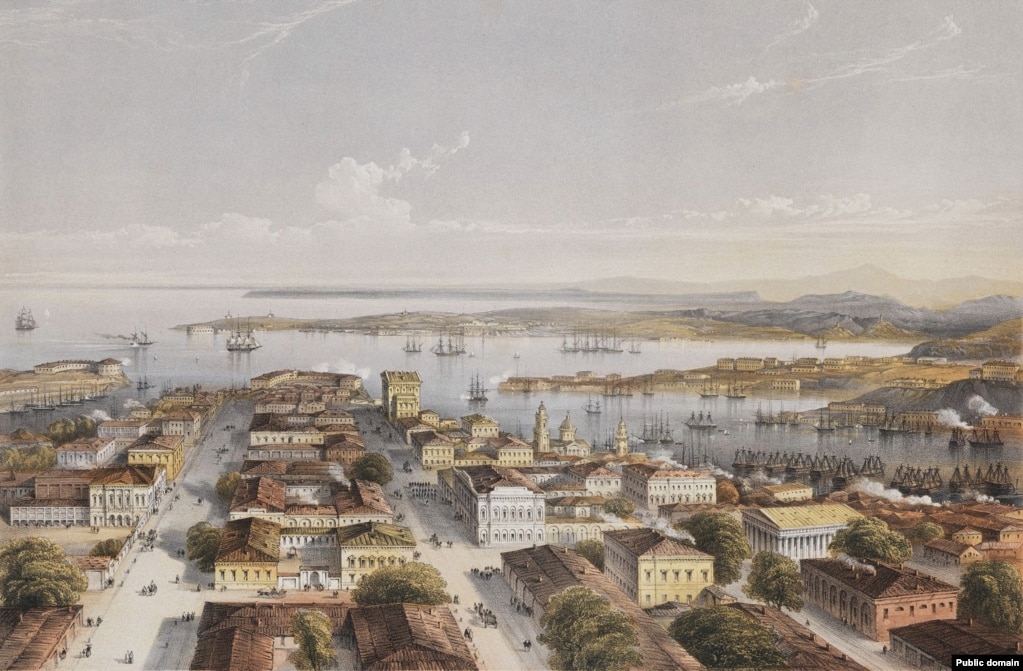
8Sevastopol viewed from a “watchtower” in the center of the town
The port city has been under Russian control since Crimea was forcibly annexed in 2014 and has repeatedly been targeted by missile strikes since the 2022 Russian invasion of Ukraine.
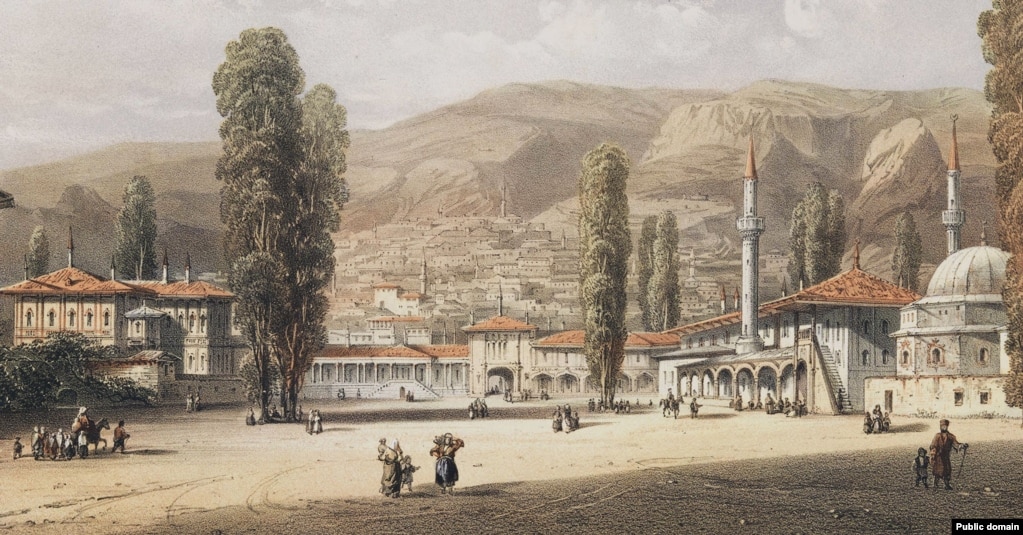
9The town of Bakhchysarai, which was the capital of the Crimean Khanate until the entity’s annexation by Russia in 1783
Bakhchysarai was emptied of Muslim Tatars after Stalin’s Soviet Union forcibly deported the ethnic minority en masse as collective punishment for some Tatars fighting on the side of the Nazis in WWII.

10A Crimean Tatar house in Alupka village
According to Bossoli, such village houses were often built against rocky outcrops that served as one wall of the residence.
“The roof is flat, and upon it, when the weather is fair, the inhabitants commonly assemble, working or enjoying one another's society,” the artist wrote.
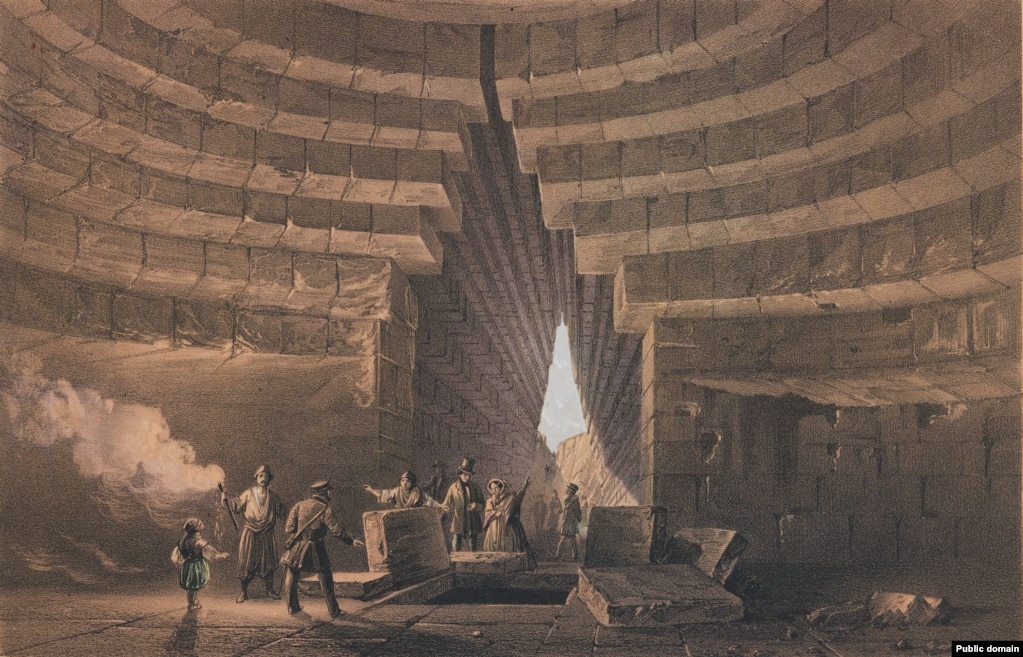
11The tomb of Mithridates on the coast of Crimea near Kerch
This otherworldy chamber is believed to have been built for the remains of a king of the Spartocids, a Thracian dynasty who ruled the Crimean Peninsula around 2,200 years ago. By the time Bossoli painted it, it had long since been looted by tomb raiders.
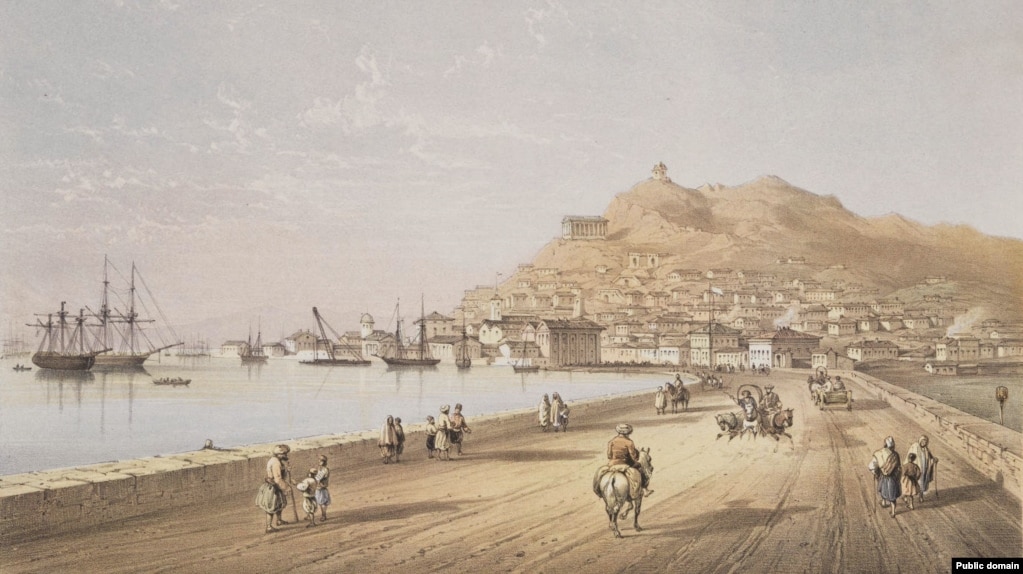
12A view of Mt. Mithridates from a waterfront road through Kerch
From this viewpoint today, the Kerch Bridge to Russia would be visible at left, some 2.5 kilometers behind the mountain.
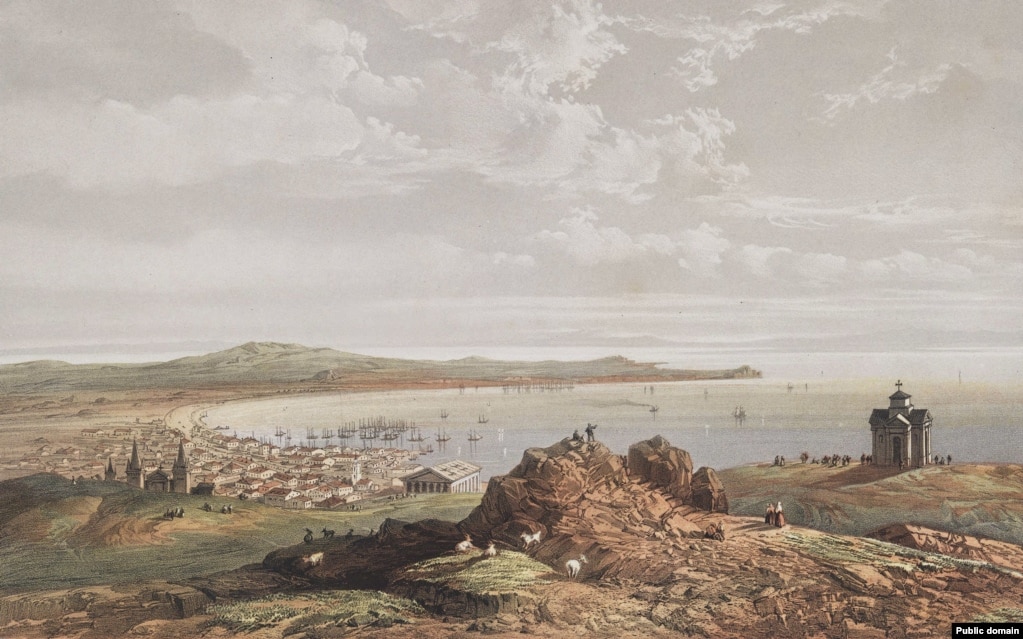
13A view over Kerch from Mt. Mithridates
The monument on the right was a mausoleum to Russian archaeologist Ivan Stempkovsky that was damaged in fighting, then demolished by the Soviets, after Kerch was recaptured from Nazi control in 1944.
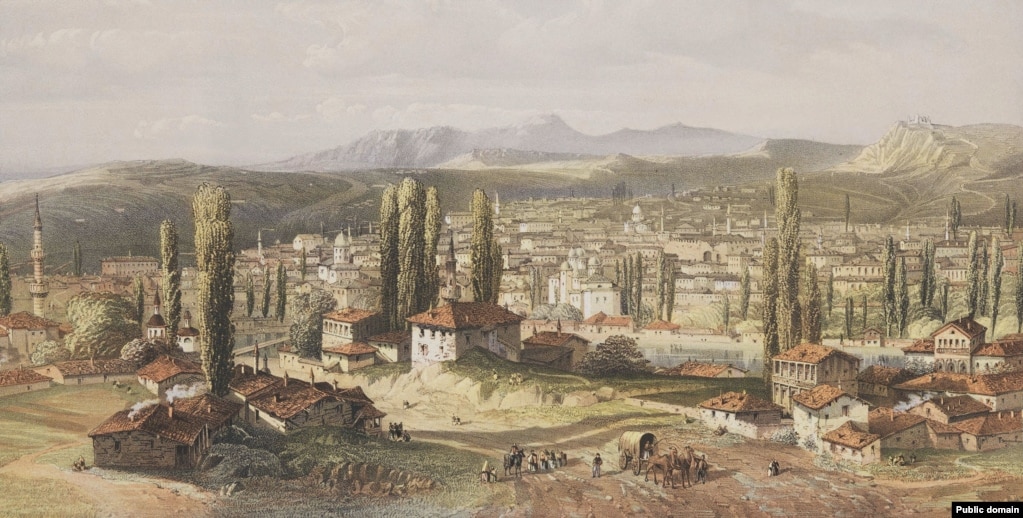
14Bilohirsk, which was known by Crimean Tatars as Karasubazar, meaning “market on the Karasu river”
The Crimean name references the town’s bazaar that included a major slave market for kidnapped Slavs during the Crimean Khanate.
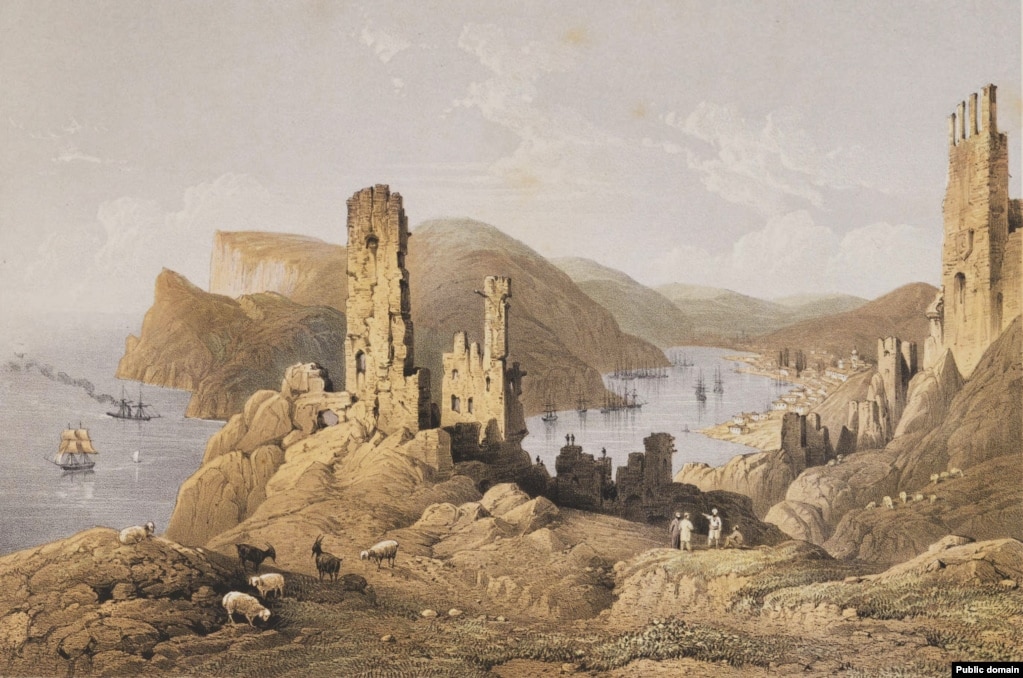
15Balaklava seen from the Genoese-era fortifications that overlook the natural harbor
Balaklava became emblematic of the Crimean War in Britain due to the costly battle fought for control of the bay.
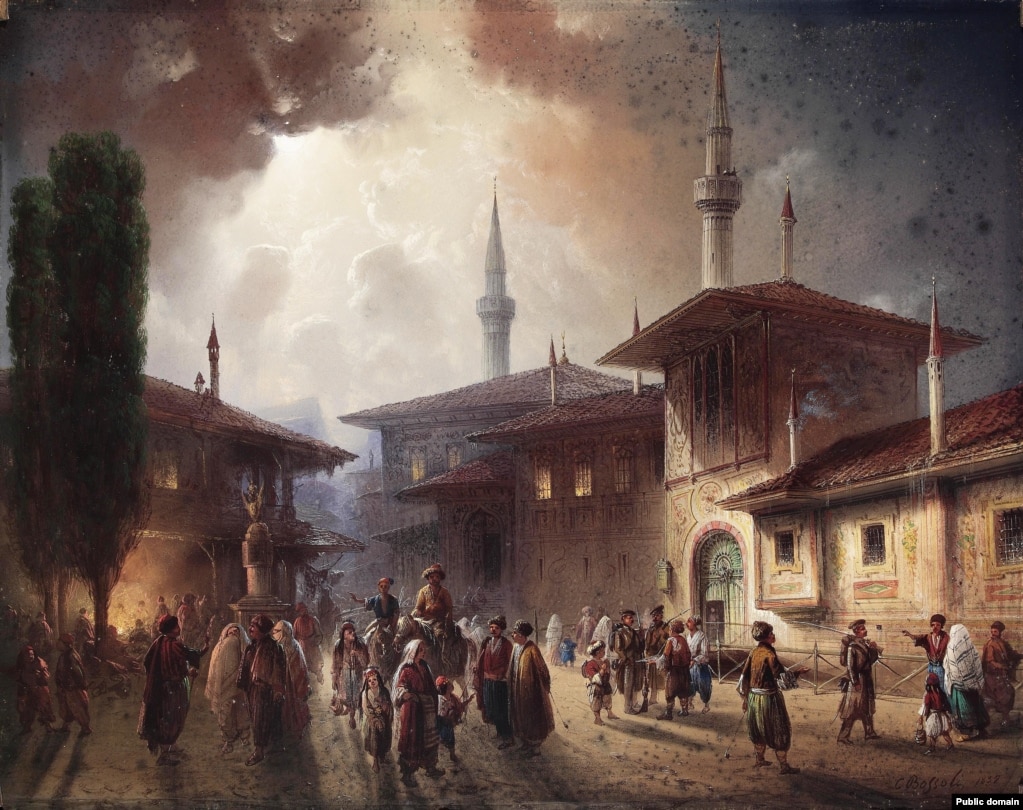
16The Khan's Palace in Bakhchysarai
The book of Crimean paintings provided a payday for Bossoli, but probably did little to advance his standing in the art world. By the time his 1856 book was published, the artist's technical prowess had advanced significantly from his youthful Crimean work, as can be seen in this 1857 painting of Bakhchysarai. Bossoli died in 1884 and is buried in Lugano, Switzerland.
TENNYSON'S POEM; CHARGE OF THE LIGHT BRIGADE
The Charge of the Light Brigade
BY ALFRED, LORD TENNYSON
I
Half a league, half a league,
Half a league onward,
All in the valley of Death
Rode the six hundred.
“Forward, the Light Brigade!
Charge for the guns!” he said.
Into the valley of Death
Rode the six hundred.
II
“Forward, the Light Brigade!”
Was there a man dismayed?
Not though the soldier knew
Someone had blundered.
Theirs not to make reply,
Theirs not to reason why,
Theirs but to do and die.
Into the valley of Death
Rode the six hundred.
III
Cannon to right of them,
Cannon to left of them,
Cannon in front of them
Volleyed and thundered;
Stormed at with shot and shell,
Boldly they rode and well,
Into the jaws of Death,
Into the mouth of hell
Rode the six hundred.
IV
Flashed all their sabres bare,
Flashed as they turned in air
Sabring the gunners there,
Charging an army, while
All the world wondered.
Plunged in the battery-smoke
Right through the line they broke;
Cossack and Russian
Reeled from the sabre stroke
Shattered and sundered.
Then they rode back, but not
Not the six hundred.
V
Cannon to right of them,
Cannon to left of them,
Cannon behind them
Volleyed and thundered;
Stormed at with shot and shell,
While horse and hero fell.
They that had fought so well
Came through the jaws of Death,
Back from the mouth of hell,
All that was left of them,
Left of six hundred.
VI
When can their glory fade?
O the wild charge they made!
All the world wondered.
Honour the charge they made!
Honour the Light Brigade,
Noble six hundred!
n/a
Source: 2017-11-01
Scene from Charge of light brigade (1936)
The Charge of the Light Brigade was a charge of British light cavalry led by Lord Cardigan against Russian forces during the Battle of Balaclava on 25 October 1854 in the Crimean War. Lord Raglan, overall commander of the British forces, had intended to send the Light Brigade to prevent the Russians from removing captured guns from overrun Turkish positions, a task well-suited to light cavalry.
However, there was miscommunication in the chain of command, and the Light Brigade was instead sent on a frontal assault against a different artillery battery, one well-prepared with excellent fields of defensive fire. They reached the battery under withering direct fire and scattered some of the gunners, but they were forced to retreat immediately. Thus, the assault ended with very high British casualties and no decisive gains.
The events are best remembered as the subject of Alfred, Lord Tennyson's narrative poem "The Charge of the Light Brigade" (1854), published just six weeks after the event. Its lines emphasise the valour of the cavalry in bravely carrying out their orders, regardless of the obvious outcome. Blame for the miscommunication has remained controversial, as the original order itself was vague, and the officer who delivered the written orders with some verbal interpretation died in the first minute of the assault.
The Charge Of The Light Brigade: The Crimean War's Greatest Blunder |
History of Warfare | Timeline
Pearls Before Swine - Balaklava 1968 Full Album Vinyl
Psychedelic Folk band formed by Tom Rapp in 1965 in Eau Gallie, Florida.
A1 Trumpeter Landfrey...
A2 Translucent Carriages
A3 Images Of April
A4 There Was A Man
A5 I Saw The World
A6 Guardian Angels
B1 Suzanne-----------------------16:44
B2 Lepers And Roses
B3 Florence Nightingale...
B4 Ring Thing
No comments:
Post a Comment